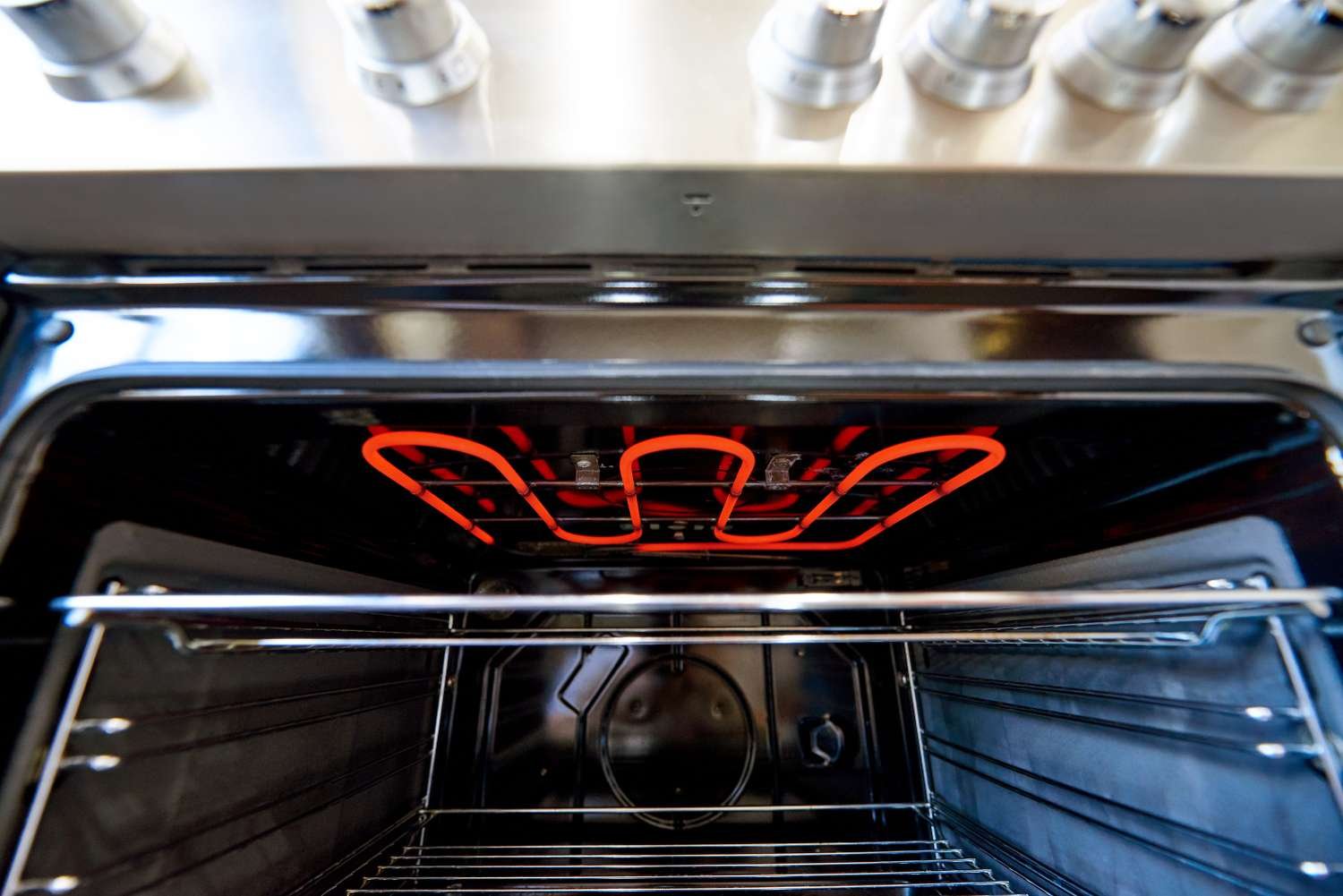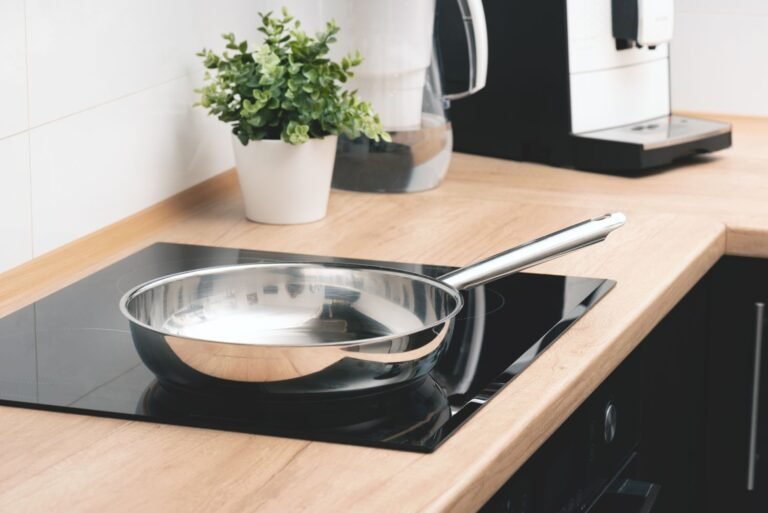As an Amazon Associate, I earn from qualifying purchases.
:max_bytes(150000):strip_icc():format(jpeg)/Simply-Recipes-Broil-Settings-LEAD-1-2fe372e414c24490b1987f7ee634e7da.jpg)
Having grown up in a house with a microwave and toaster oven, I don’t think I ever broiled anything until I was well into my twenties. I thought a broiler pan was just a funky-looking cooling rack. That changed once I started testing recipes professionally and got schooled on how useful broilers are. Turns out you don’t even need a broiler rack to use one!
If you’re a North American who has jumped on the open-faced cheese toastie train, you’re no stranger to the broiler. If not, and you’re not broiling steak like a 1950s bachelor, the broiler may be a mystery to you. How is it different from using the oven the way you normally would? What foods work best with it?
Most importantly, why bother? Broilers are an untapped asset in many kitchens, and turbo-cook foods to transform them from blasé to sizzling.
How a Broiler Works
Broilers are all about high temperatures, and if there’s one person I know who gets temperatures, it’s chef Martin Earl. He’s a culinary educator and food writer, as well as Culinary Editor at thermometer mavens ThermoWorks. I asked him to break down how broilers work.
“A broiler provides directional, direct heat,” he says. “Where a regular oven or a roast setting creates an all-over heat environment that cooks mainly via convection, a broiler cooks with a high heat (a bare flame or heating element) right above your food.”
Earl hits on a curious aspect of broilers: they’re in part defined by what they’re not heating. Only the top element heats when you use a broiler.
How To Regulate the Power of a Broiler
Another key feature of broilers: they won’t let you select a specific temperature, though some ovens have a “high broil” and “low broil” setting. Most are either on or off and that’s it. A broiler’s temperature typically ranges from 450°F to 500°F. And when food is only inches away from the flame, it cooks fast.
Without the option to modify temperature, the broiler requires a specialized approach. “Instead you choose how far from the flame you place the surface of your food,” Earl says. “A flatbread placed three inches from the flame will burn in no time, and a steak placed 12 inches away may as well just be roasting in the oven.”
A good recipe will tell you how many inches from the top heating element to position the oven rack. The closer to the broiler, the more searing (or burning) there will be, and the faster it’ll happen.
For this reason, says Earl, “You should always watch your broiler like a hawk. Is the food browning too quickly? Move it down a rack. Is the cheese barely bubbling? Up a rack it goes. This is one of those cooking skills you can’t just get from a book, you have to get a feel for it and adjust to your taste.”
Unlike an oven’s regular setting, the broiler still works great with the oven door ajar some. To best monitor quick-to-burn food (think marshmallow topping on sweet potatoes), keep the door open a crack and watch it the whole time.
Simply Recipes / Getty Images
The Best Foods To Broil
Broiling remains a niche technique in part because the results it gives you are so specific. “Broilers excel anywhere you want Maillard browning and you want it fast,” Earl says. “That means toasty bubbly cheese, browned breadcrumbs, and a crusty, flavorful sear on meat. It can also handle caramelization with aplomb. Brûlée just about anything under a broiler, from crème to halved grapefruits sprinkled with sugar, to candied yams.”
A caveat: that intense blast of heat doesn’t penetrate deep into the food the way prolonged cooking at moderate temperatures will. “Broilers are great for cooking surfaces, less great for cooking interiors,” Earl says. “Don’t cook a whole chicken under a broiler, it will char well before it is safe to eat inside. Do crisp the chicken’s skin at the end of your cook, though! This is great for browning, toasting, or searing your dish, often as a finishing step. A little broil at the end of the cook brings a sheet pan meal to the next level.”
In my humble opinion, the broiler is vastly under-appreciated for quickly cooking thin, tender cuts of meat and fish. A broiled steak won’t broadcast grease spatters all over your stovetop. Broiled salmon is excellent because there’s no need to wait for an oven to preheat, it cooks in minutes, and a sugary glaze is more likely to set into an appealing glossy shellac.
Which Pans Are Broiler-Safe and Which Aren’t
You don’t want to slide just any pan or dish under the broiler. It has to be sturdy enough to handle the heat. “The best pans for broiling have some mass to them,” Earl says. “A cast-iron or tri-ply skillet goes into and out of the broiler like nothing ever happened. A super flimsy cookie sheet can warp under the extreme directional heat, but a well-built cookie sheet works fine. ”
I know this from direct experience. I once warped a skillet at a vacation rental by broiling a frittata for a bit. Even a medium-weight pan can warp under the concentrated heat of the broiler.
Select your pan with care. “Avoid any pans with a non-stick lining or synthetic or wooden handles,” cautions Earl. “Teflon and other non-sticks will gas out, releasing harmful chemicals into your kitchen and shortening their lifespan. The wrong handles melt or char.”
Another material to keep away from the broiler? Glass baking dishes. While they’re not an issue in a hot oven, they can’t handle the extreme temperatures of broiling. Rapidly heated glassware—even tempered glass—can crack or explode. Ceramic dishes, like crème brûlée dishes, are fine.
The Takeway
Broilers might be miniature infernos, but the learning curve isn’t steep. The next time a recipe calls for broiling, don’t shy away. And try to experiment with broiling as a final step for pizzas, casseroles, and cheesy bakes that look just a bit too pale.
Earl, of course, is a fellow broiler cheerleader. “Use it! It adds great depth of flavor to your food, makes for beautiful presentations, and is just sitting there waiting for you.”
https://www.simplyrecipes.com/when-to-use-broil-setting-on-oven-11842895
https://www.simplyrecipes.com/thmb/OWsOGj6JF79tXpX66Yv62uVQ_JE=/1500×0/filters:no_upscale():max_bytes(150000):strip_icc()/Simply-Recipes-Broil-Settings-LEAD-1-2fe372e414c24490b1987f7ee634e7da.jpg
Most Recent,Recipes & Cooking Ideas,Cooking Tips And Techniques,In The Kitchen
#Broil #Setting #Oven
Check out this PAGE – https://www.simplyrecipes.com/when-to-use-broil-setting-on-oven-11842895
Check out this Page Travel Package discount Must haves – Source2
Disclaimer: As an Amazon Associate, I earn from qualifying purchases; I may earn a commission from qualifying purchases as an affiliate. Please note that I only recommend products I believe will provide value to my readers.




